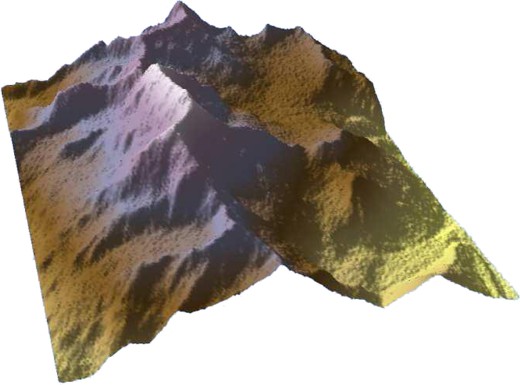Geographical Information Systems (GIS) encompasses the technological and social knowledge and issues relating to spatial data and information. The research expertise in GIS at the School of Surveying covers most major themes in the discipline, including spatial analysis, collaborative GIS, web GIS, cartography, geovisualization, spatial modeling, spatial databases and data structures.
Find below a selection of projects in which the school is involved.
 Digital Elevation Model (DEM)
Digital Elevation Model (DEM)
Research is undertaken at the School of Surveying to create and assess DEMs. This led to the release of NZSoSDEM, a free, publicly available 15m nationwide DEM.
Find out more about modeling of topography.
Isotopic variability of rainfall across New Zealand
The stable isotopes Hydrogen-2 and Oxygen-18 found in rainwater have been collected and mapped as a ratio across the country, forming a base dataset for potentially establishing the point of origin of biological materials. The maps reveal patterns in space and time and indicate new locations for sampling.
Find out more about stable isotope mapping.
Cartography and Art
This is an exploration of visual artistic forms as a complement to GIS-produced maps, which have a scientific basis. Topics within this research area include comic / photo strips embedded in maps (and vice versa), and digital interfaces featuring maps accessed through scanned fine art.
Find out more about cartography and art.
Web-based collaborative GIS in local planning and decision discourse
This project has developed and used open source software to support online and collaborative discussion using web mapping and the median of discussion.
Space, time and open source software in the land administration domain
This project focuses on the development of open source software for the management of land administration records. It seeks to integrate semantics and Web mapping to build a jurisdictional and domain-free workflow-based and event-driven spatio-temporal data model.
Find out more about the Open Source CAdastre and Registry (OSCAR) project.
Hierarchical hexagonal surface models
To capture the high spatial variability of urban hydrology, distributed hydrological and hydraulic models are being developed that employ hexagonal hierarchical data structures.
Find out more about the Hierarchical Hexagonal Surface Models project.
3D subsurface visualisation
This project involves the creation of a 3D visualisation framework to analyse subsoil data sets.
Find out more about the 3D Subsurface Visualisation project.